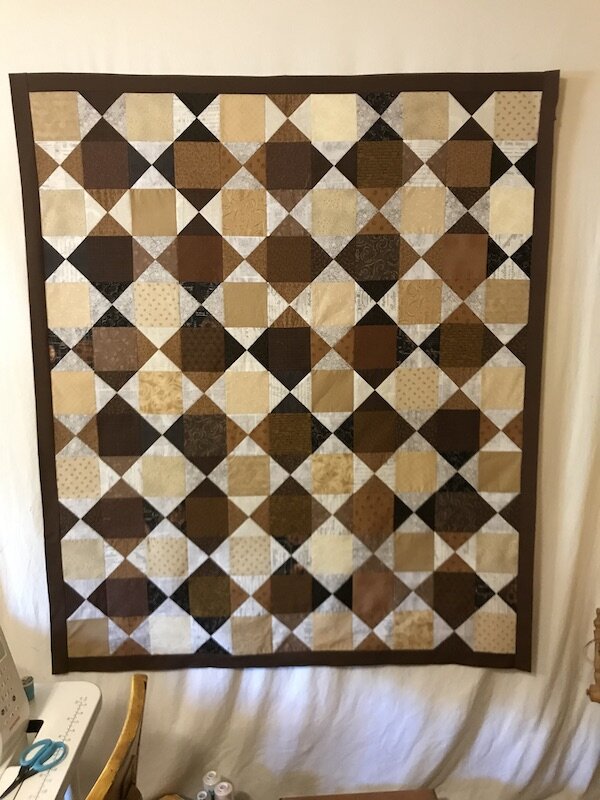Birdies
We are now seven days from chicks possibly hatching, so I went through and candled all the eggs. I put 25 eggs in the incubator two weeks ago, and I am pretty sure that all of them except four have chicks inside. I’ve never done this before, so I could be completely clueless, but the difference between the eggs that were clearly not fertilized and the ones that look like they are is rather stark. I could even see blood vessels inside some of them.
[I did major in biology in college, so I can’t be that clueless.]
I would be beyond thrilled with that many chicks. A percentage of them are going to be roosters; I do not know how to sex chicks and have no plans to learn because it isn’t going to make a bit of difference until they are older, by which time it will be obvious. We’ll get this first batch to the point where they can go into the separate area of the coop and reassess. I might incubate another couple dozen in a few months so we get enough layers. Too many chickens is not going to be a problem given the current predictions about the food supply.
The robins have begun staking their claims on prime porch rafter real estate (that sound you hear is me sighing at the thought of having to keep a dog away from fledging babies):
I am a bit concerned about the hummingbirds. I heard their telltale buzzing right on schedule at the end of March—I always hear them before I actually see them—but then we got a couple of spring storms with snow and cold temps, and I haven’t heard or seen any since. I hope nothing happened to them.
We had a hailstorm Monday night and it went down to 27 degrees overnight. I was afraid the hoops might have taken a beating, but they were fine and the corn seedlings still look good. Whew.
************************************************************
I put a narrow dark brown print border on the neutrals quilt:
And there it has stalled. I auditioned half a dozen border layouts with the extra QSTs and squares and wasn’t happy with any of them so I abandoned that idea. I’ll add another, wider border in a lighter print and call this good. Those leftover QSTs can become a wallhanging or get used in another project.
I thoroughly decimated my supply of browns and neutrals with this quilt. I didn’t have a lot to start with—I tend to collect blues and hot pinks—so I will have to make a concerted effort to bulk up on those colors.
I knocked out another batch of masks yesterday and cleaned up my work area. It’s time to start on some bag projects, I think.
**********************************************
I ran across a very interesting piece put out by the Strategic Sewing and Quilting Summit, which appears to be a new-ish non-profit dedicated to growing the quilting and sewing industry. From their website:
Our industry doesn’t work together to grow the end consumer. We want to change that. Retail, environmental, and digital challenges are the new normal. Together, we can develop an industry strategy to grow in a changing world. How do we work together to grow the end consumer?
The Strategic Sewing & Quilting Summit was founded as a non-profit dedicated to achieving consumer growth through collaboration of key leaders in the sewing and quilting industry. Through this initiative, we as an industry can, collectively, develop our strategic plan for growth.
The in-person Summit was canceled because of the lockdown; organizers are hoping to reschedule it at some point in the future. This group did a small, informal survey of contacts during the week of April 15, 2020, about how the virus has impacted the industry. It’s not comprehensive, certainly—only ninety-two respondents participated—but it does align with some of the same things I am seeing and hearing. Specifically:
The report notes that this is a key moment for brick-and-mortar stores. Those that also have an online presence are able to pivot and adjust, although online sales do not necessarily make up for the loss of in-person sales. Both of our local quilt stores have significant social media presences and online shopping. The Quilting Bee, in Spokane, for all that it is a huge store, has a website but no e-commerce. I wonder how this shutdown has impacted them.
Entry-level sewing machines, elastic, and basic fabric sales are strong, and in some cases have not kept up with demand. The report noted that “Retailers have faced a staggering number of requests for elastic, that often overshadows their ability to serve all customers. Many have reported they have or could spend more than 50% of their time on answering the question, “Do you have elastic?”
Loss of in-store classes has been a huge hit to revenue streams. Again, I am thinking of The Quilting Bee in Spokane, which relied heavily on in-store classes.
Designers and teachers have seen a decrease in income because of the cancellation of classes, conferences and retreats.
“Retailers that sell and service sewing machines are reporting an overwhelming number of calls for service on old machines previously left in the closet.” How about that.
Demand for new fabric collections is down. Spring Quilt Market—when many stores place orders for fall delivery of new lines—was canceled this year. Personally, I don’t think this is a bad thing only from the perspective that flooding the market with new fabric lines every quarter was a bit much, so if that gets scaled back a bit, I’m not sure that’s a negative.
As with any kind of industry shift—no matter what the driver happens to be—there will be new opportunities even as old paradigms fall apart. Lots of people are sewing now who weren’t before. Will they continue to do so?


